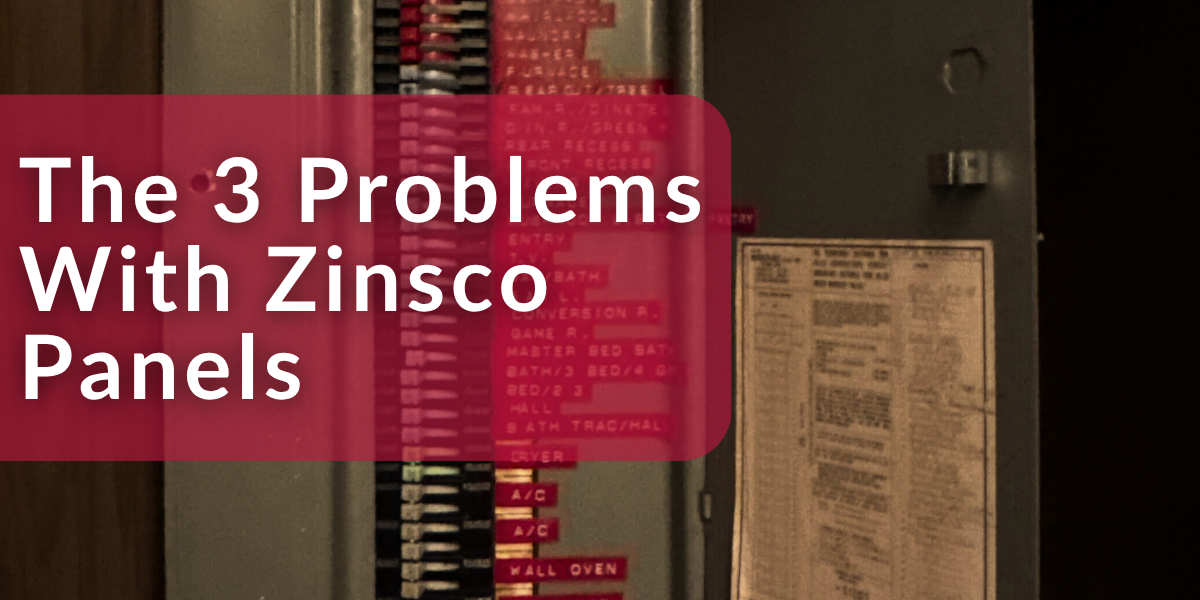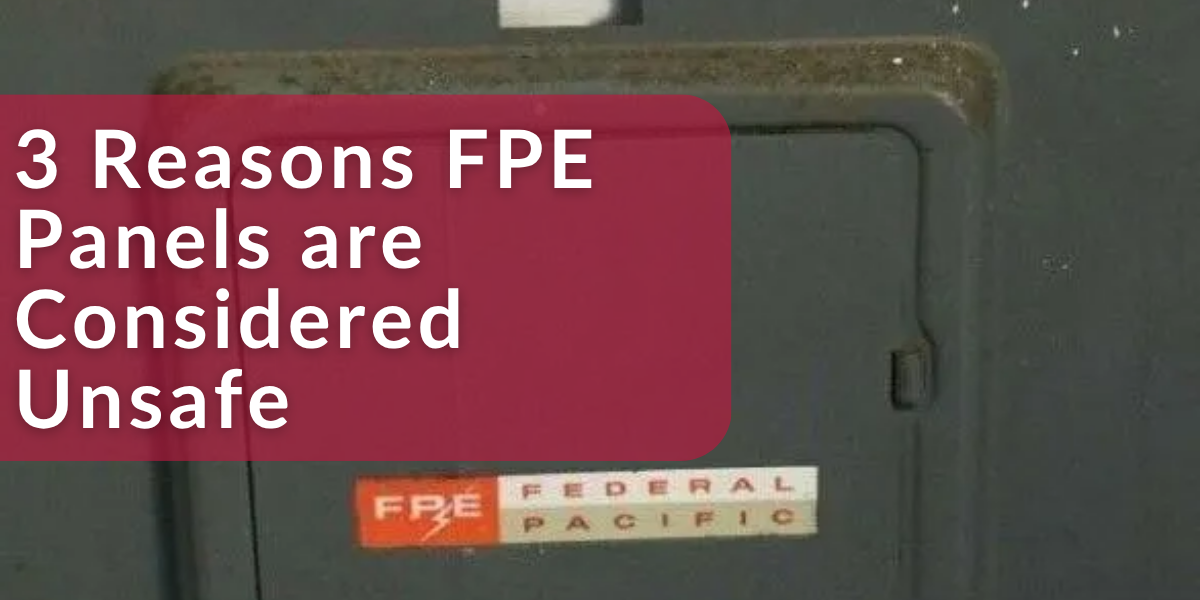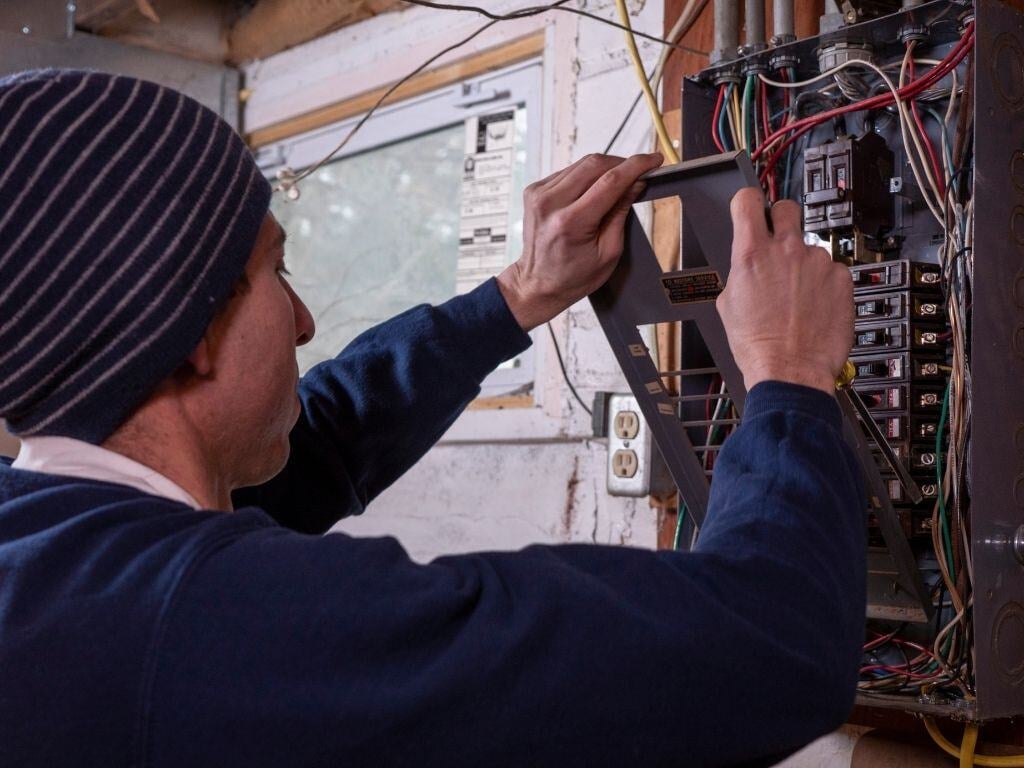What Is a Wadsworth Panel? 5 Big Problems Every Homeowner Should Know
October 25th, 2025
4 min read

So your electrician told you that you have a Wadsworth panel… and you might be wondering, “Okay, what’s the big deal?” After all, your lights are on, the outlets work, and nothing seems obviously wrong. But the truth is, the type of panel in your home plays a major role in how safely and reliably your electrical system runs. Many Wadsworth panels were installed decades ago, long before today’s electrical demands and safety standards. Over time, that can lead to problems like flickering lights, frequent breaker trips, or even overheated wires that put your home at risk.
At Integra Electrical, we work on older homes across Central Iowa every day, and we’ve seen just how unreliable these panels can be. Wadsworth stopped manufacturing panels in 1990, and most were installed in homes before the 1970s. If you do the math, that means any Wadsworth panel still in service is likely 50 years old or more, and that age alone is a red flag.
The five biggest problems with Wadsworth panels are:
- Breakers that fail to trip during overloads or short circuits
- Outdated design with no modern safety features
- Overheating, rust, and visible deterioration
- Flickering lights and unstable power
- Burning smells, buzzing sounds, or scorch marks
Breakers That Fail to Trip
The most important job of a circuit breaker is to cut off power when a circuit is overloaded. That split-second action prevents wires from overheating and keeps your home safe. With Wadsworth panels, however, breakers often fail at this critical job.
Some homeowners deal with the opposite problem, breakers that trip constantly for no obvious reason. While inconvenient, that’s also a warning sign of a worn-out mechanism. The greater danger is when a breaker doesn’t trip at all. Without that protection, wiring inside your walls can heat up, melt insulation, and even spark a fire.
When breakers can’t be trusted, the entire panel becomes unreliable, leaving your home vulnerable to risks it was meant to prevent.
Outdated Design and Missing Safety Features
Wadsworth panels were designed for homes built decades ago, when electrical demand was much lower. A typical home in the 1960s had one TV, a refrigerator, and a few lights. Today’s homes run central air, microwaves, gaming systems, and chargers on nearly every outlet. That kind of load can overwhelm a Wadsworth panel.
Another issue is the lack of modern safety devices. Today’s panels include GFCIs to prevent shock near water and AFCIs to detect dangerous sparking in wiring. These protections are required by code in many parts of the home because they save lives. Wadsworth panels don’t have them, which leaves your electrical system more exposed to hazards than modern standards allow.
Overheating, Rust, and Visible Damage
Time and wear take a toll on every electrical panel, and Wadsworth units are no exception. After decades of use, the connections inside often loosen or corrode. When that happens, electricity meets resistance, which generates heat. The result is panels that feel warm to the touch, show scorch marks, or give off a faint burning odor, all of which are serious warning signs.
Moisture can make the problem worse. Rust or water stains on or around the panel suggest water intrusion, which can damage breakers and wiring. These issues aren’t cosmetic; they’re evidence of a panel that can no longer handle its job safely. A compromised panel is one step away from a major electrical fire.
Flickering Lights and Unstable Power
One of the more subtle warning signs of a failing Wadsworth panel is flickering or dimming lights. You might notice bulbs dip when the air conditioner kicks on, or a TV picture waver when the refrigerator cycles. These aren’t just quirks of an older home, they’re signs your panel isn’t distributing power evenly.
Loose connections, worn breakers, and outdated design cause unstable voltage. That inconsistency doesn’t just make lights flicker, it can shorten the lifespan of appliances and even damage sensitive electronics like computers or TVs. What seems like a minor nuisance is really your panel signaling that it’s under stress, and if ignored, those fluctuations can escalate into dangerous overheating and fire hazards.
Burning Smells, Buzzing, and Scorch Marks
Some warnings from a Wadsworth panel are impossible to ignore. A burning smell, buzzing noises, or visible scorch marks all point to severe internal problems. Burning plastic or a fishy odor often means insulation on the wires is overheating. Buzzing or crackling sounds suggest loose connections or arcing, where electricity jumps through the air, a major fire hazard.
If you see blackened spots on the panel cover, melted components, or discoloration on nearby walls, the danger is immediate. These aren’t maintenance issues you can put off; they’re signs of a panel in crisis. At that point, the safest response is to shut off power if possible and call a licensed electrician right away.
Why Replacement Is the Safe Choice
If your home still has a Wadsworth panel, it’s worth being aware of the potential issues that can come with its age and design. Breakers that don’t trip, outdated layouts, overheating, unstable power, or visible signs of wear can indicate that the panel isn’t functioning as reliably as it once did. In many cases, problems go beyond a single breaker and stem from the panel as a whole.
The safest long-term solution is a full panel replacement. A modern electrical panel gives your home the protection it needs, with reliable breakers and safety features that meet today’s code. Most importantly, it brings peace of mind.
Want to know what it would cost to upgrade? Try our free Electrical Panel Upgrade Calculator for an instant estimate tailored to your home.
Frequently Asked Questions
How can I tell if I have a Wadsworth panel?
Open the metal door of your electrical panel and look for the word Wadsworth or a circular “W” logo on the label.
Why are Wadsworth panels considered unsafe today?
They have a history of breakers failing to trip, outdated design that can’t handle modern electrical loads, and physical wear such as rust or overheating that raises fire risks.
Can I just replace the breakers instead of the whole panel?
Replacing one breaker doesn’t solve the core problem. The design and age of the panel itself make it unreliable, which is why most electricians recommend a full replacement.
How much does a replacement typically cost?
MOST panel upgrades fall between $4,500 and $15,000 depending on your home size and system needs. Our Electrical Panel Upgrade Calculator can give you a personalized estimate.
Daniel Carpenter is a licensed electrician on Integra’s installation team. He got his license at just 19, but he's been around the trade his whole life. With five years on the job and a heart for helping homeowners, Daniel takes pride in doing quality work that serves the local community.
Topics:



.png?width=1200&height=600&name=ITEpanel%20(2).png)







